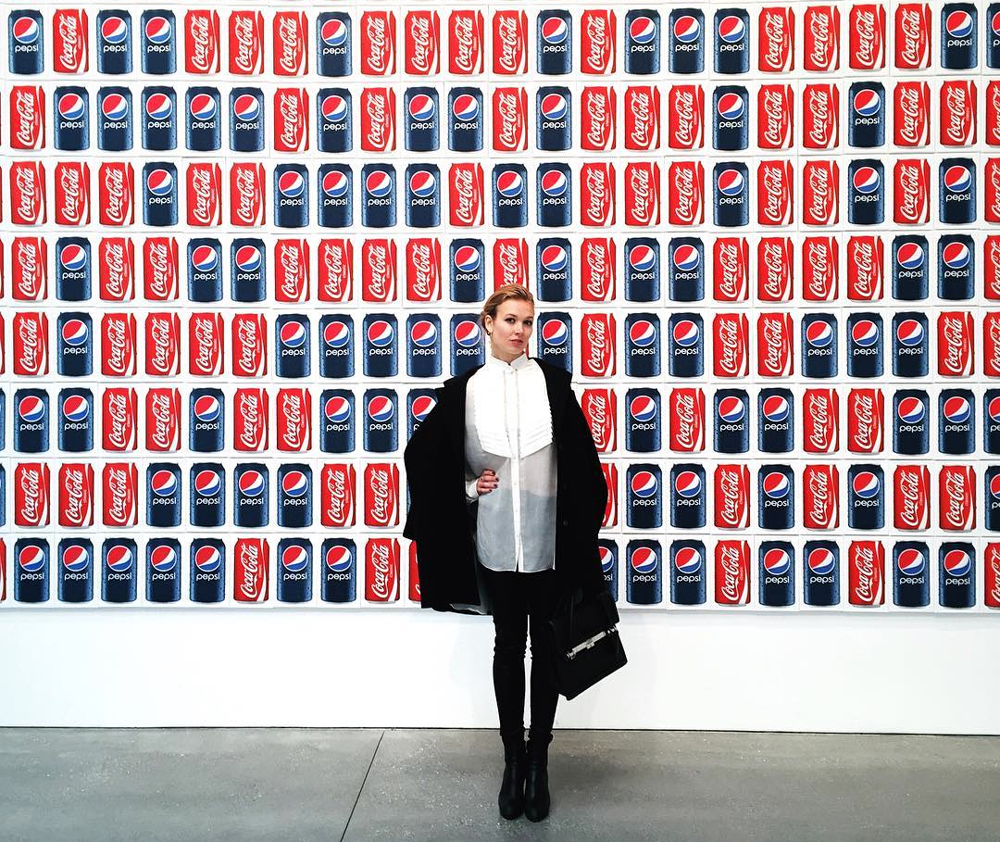I have no interest in real fame, but I would love to be Instagram famous. Real stars are famous all the time—during their worst moments, their downtime. The attention they receive is omnipresent. Instagram stars have the luxury of control. Their presence is carefully, consciously performed; they show the world how they would like to be seen.
And while it makes sense to build your Instagram presence around what you already know, the art world can make this difficult. Plenty of museums and exhibitions outlaw photographs; gallery visitors often see photography as an interruption. Virtually any article on the topic collects complaints in the comment section. Taking photographs with art is frivolous, vacuous, a revelation of deep-seated narcissism (which, of course, disproportionately affects the youth of today).
“There’s a perception that looking at art through a lens is a vapid form of consumption, or that people don’t actually enjoy the work because they’re too busy photographing it,” says Elena Soboleva, curator of special projects at Artsy.net. “But I would point to the Broad Museum in LA as a counterargument. The institution has seen an unprecedented number of millennial visitors, who are lining up around the block. It’s the first time any institution in that area has had that kind of engagement, and people wonder why. People see their friends posting photos, whether it’s a Jeff Koons or Yayoi Kusama’s Infinity Room, and they want to have that experience and participate in it.”
A photo posted by Elena Soboleva (@elenasoboleva) on May 6, 2015 at 5:44am PDT
With just shy of 10,000 followers, Soboleva is something of an authority. (She has also covered the ins and out of social media for Artsy’s Gallery Insights series.)
Elena Soboleva’s Instagram Tips
1. Avoid over-processed filters. Instead, download a more in-depth editing app, like Snapseed, and use it to tweak your image to perfection. Play around with cropping, contrast and saturation in particular. But as a general rule, keep things natural: white gallery walls should look white, not Valencia-filter yellow.
2. More spectacular and grandiose works translate into better Instagram images. If you’re in a Turrell or a Kusama tentacle environment, you’ve got great Instagram material. And look for the way that gallerists and dealers are adapting to the camera-phone era: plenty of booths at fairs are laid out so that art selfies can be taken without disrupting the booth’s flow of business (Lisson Gallery often faces their Anish Kapoors to the outside of the booth).
3. Don’t use a flash. There are limits to taking the perfect photo. Flashes can ruin some artworks, and are overly disruptive to people. Taking photos in a gallery space can be distracting; try to be mindful of other visitors.
4. Try to match your clothing to the artwork. This isn’t just photography advice; this is career advice. Pari Ehsan, @Paridust, has managed to turn her feed of gallery-girl outfits that match the work into a full-time career. You don’t need to have such sartorial aspirations, but try to plan ahead before an opening. If you’re visiting an Ellsworth Kelly show, colour block. If it’s a Bridget Riley show, stick to monochromes.
5. If you’re in the photograph’s frame, make it purposeful. It’s perfectly fine to have yourself in front of a painting, but the real value-add comes when your figure offers some context: head-to-toe shots can display the scale of a work, or a human figure can interact with the art in some way. Soboleva’s general ratio is that for every three to six images of work she’ll include an image of herself with work.
6. Consider bringing a patient photographer. In this case, “art selfie” is something of a misnomer. With Soboleva’s images, her figure provides a measure for the scale of the work, and she actually needs a patient friend or partner to take the photograph. So gallery hop in groups.
7. Build a consistent brand. You might have nice photos in your phone’s gallery of dogs and meals, but to build a following people are going to want to know what to expect from you. If you want to focus on food and art, do that, but stick to it. Focus on something within the art world that interests you, and be consistent.
8. Be sparing with hashtags and smart with geo-tags. Anything more than two hashtags is a little excessive, and they should be meaningful hashtags: don’t bother with things like #instagood, #wanderlust or #follow4follow—they come off as a bit too much. But a carefully selected hashtag and a geotag can go a long way towards widening your audience.
9. Remember that Instagram should be timely. Try to avoid Instagramming something after the fact. With a few exceptions, there should be timeliness to your posts—try to share new, immediate content with your followers as much as possible, especially with performance art and openings. The art world is more social than ever, and people want to see you at the Hearn in real time, not a couple of days later.
10. Avoid crowds. Generally speaking, your images should be unpeopled (unless it’s a portrait that includes yourself or someone else). To facilitate this, some galleries and fairs have even started offering “empty events,” where select Instagram users are invited to preview the fair or the gallery in a small group to get the best possible images. Until you make it on the invite list for an empty event, though, you’ll need to strive for this effect on your own.
Last shot from inside the #FrankGehry-fied @agotoronto. Most Canadian 4th of July ever ✌️????????A photo posted by JiaJia Fei ✌ (@vajiajia) on Jul 4, 2016 at 11:41am PDT
????????????????#frankiebaby @whitneymuseum ✖️#frankstella ????✨ @ty.cunn
A photo posted by @sirsargent on Nov 1, 2015 at 2:25pm PST

 Elena Soboleva’s Instagram photo with Jonathan Horowitz’s Coke/Pepsi (286 Cans) (2012), at the Brant Foundation.
Elena Soboleva’s Instagram photo with Jonathan Horowitz’s Coke/Pepsi (286 Cans) (2012), at the Brant Foundation.







